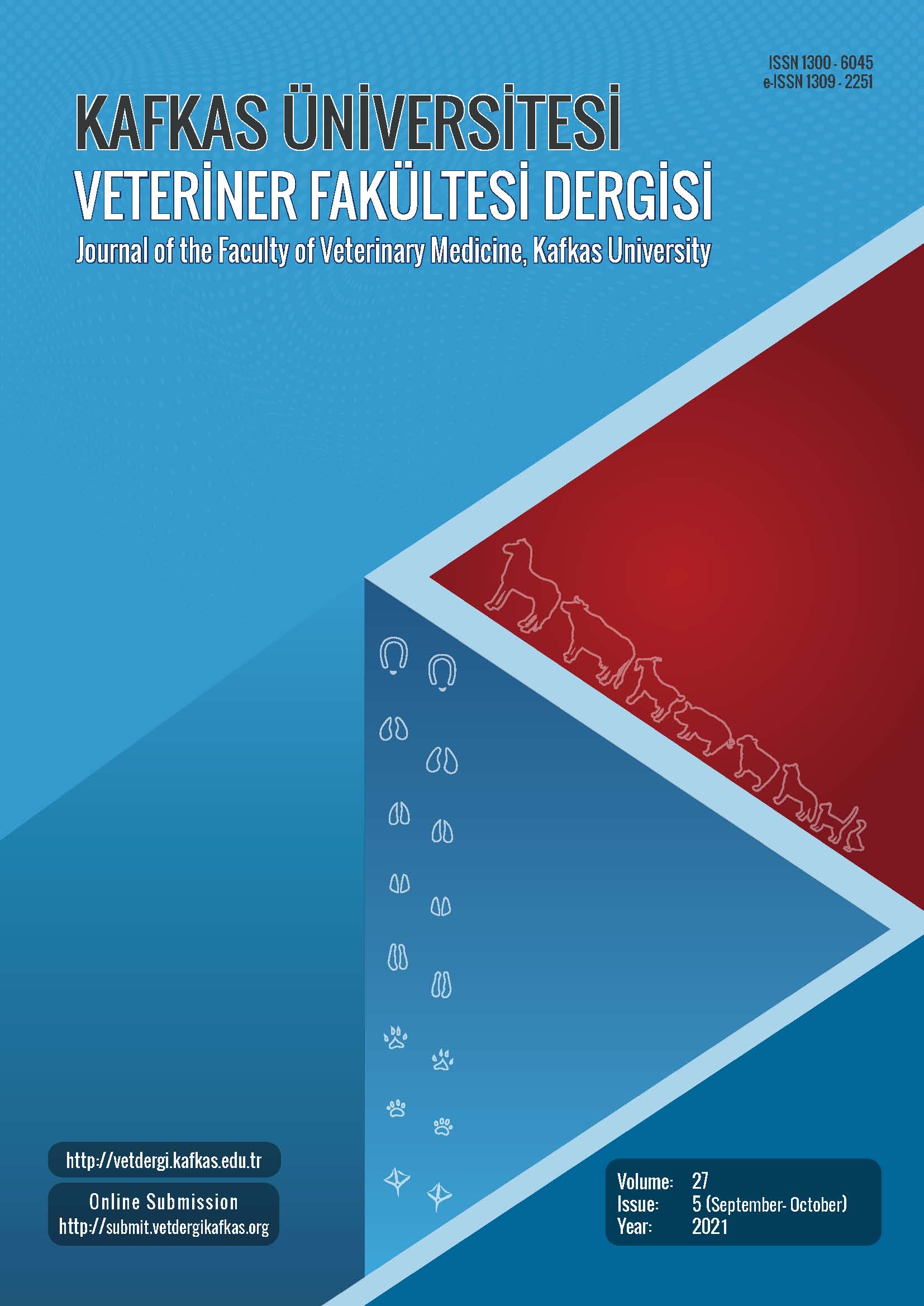
This journal is licensed under a Creative Commons Attribution-NonCommercial 4.0 International License
Kafkas Üniversitesi Veteriner Fakültesi Dergisi
2021 , Vol 27 , Issue 5
Butyric Acid Bacteria Culture Solution Improves Hyperglycemia in Alloxan-Induced Diabetes Mellitus Rats
1Laboratory of Veterinary Surgery, Department of Veterinary Medicine, Faculty of Agriculture, Tokyo University of Agriculture and Technology, Tokyo, JAPAN2Department of Veterinary Medicine (Internal Medicine), Faculty of Veterinary Medicine, Suez Canal University, Ismailia, 41522, EGYPT
3ACE BIO PRODUCT CO., LTD, Tokyo, JAPAN DOI : 10.9775/kvfd.2021.25867 Butyric acid bacteria (BAB) are the primary intestinal flora present in all mammalian digestive tracts. Prior studies have found the association between decreased intestinal BAB population and development of diabetes, and BAB was suggested as a new treatment of type 2 diabetes. However, few studies have examined the effect of BAB on type 1 diabetes (DM1), which is frequently diagnosed in pet animals. Therefore, the aim of this study was to examine the therapeutic effects of BAB culture solution in the DM1 model. Thirty female rats were included for induction of DM1 by alloxan (200 mg/kg, IP). After one week, DM1 was developed in 13 rats (blood glucose level >300 mg/dL) which were then treated with BAB culture solution at a dose rate of 300 μL/kg/day for two weeks. The result revealed a reduction in blood glucose level (P<0.05) and improvement of polydipsia and polyuria in six diabetic rats; meanwhile, 7 rats did not respond to the treatment. The blood pressure showed no change. In conclusion, the administration of BAB culture solution alleviates symptoms of DM1 by improving glycemic control in the model. The effectiveness of BAB as an alternative or supportive therapy for the treatment of DM1 needs further studies on pet animals. Keywords : Alloxan, Butyric acid bacteria, Hyperglycemia, Rat diabetes model










